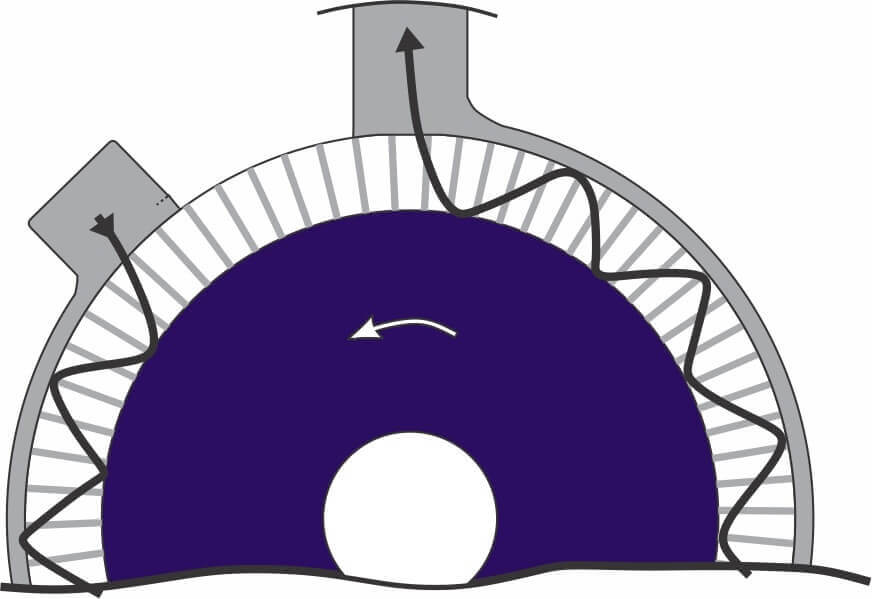Peripheral Pump Guide
What are peripheral pumps?
A peripheral pump is a close-coupled centrifugal pump with an impeller consisting of a large number of radial vanes on the outside edge. The impeller rotates in a concentric casing channel with the liquid flowing between the vanes and casing transmitting large amounts of energy leading to a large increase in pressure within the pump.
The inlet and outlet of the casing are separated by a strip of metal ensuring all fluid entering the inlet is discharged via the outlet.
They are typically designed for clean fluids due to the narrow clearances between the impeller vanes and pump casing meaning any solids would stop the impeller.
Peripheral Pump applications tend to be applications where a medium to high pressure liquid transfer pump is required of low viscosity which can be for hydro cyclone feed, filtration, transfer of fluids across large distances, jetting, and for display fountains.
Peripheral Pump curve
Peripheral pump curves are steeper than centrifugal and side channel pumps as shown across which is quite different to that of a centrifugal pump curve.
Peripheral Pumps advantages include:
1) Ability to handle gas entrained fluids without risk of cavitation. They also have versions which have a high Self priming ability up to 6M handling any air ingress without issue. Standard versions have manometric suction lifts up to 8M when fitted with a foot valve.
2) Low flow rates at high pressures similar to gear pump without need for gear box. It also means they are compact in design, and with low axial thrust their lifespan is long.
3) Low NPSH requirements
View our range of Peripheral Pumps






